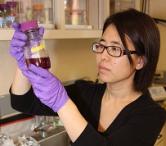Science News
Wastewater Electricity
August 16, 2012

When looking at new energy sources, researchers always have to be careful that they’re not causing more harm than good—biofuels that deplete food or water sources, solar energy grids in endangered tortoise habitats, or fracking, to name a few.
Thank goodness for Oregon State University’s Hong Liu and her colleagues! They’ve discovered a win-win solution—producing electricity from wastewater.
Their new microbial fuel cell technology, published in the current issue of Energy and Environmental Science, cleans sewage by a very different approach than the aerobic bacteria used in the past. Bacteria oxidize the organic matter and, in the process, produce electrons that run from an anode to a cathode within the fuel cell, creating an electrical current. Almost any type of organic waste material can be used to produce electricity this way—not only wastewater, but also grass straw, animal waste, and byproducts from such operations as the wine, beer or dairy industries.
The approach may also have special value in developing nations, where access to electricity is limited and, as a result, sewage treatment at remote sites proves challenging.
Experts estimate that about three percent of the electrical energy consumed in the United States and other developed countries is used to treat wastewater, and a majority of that electricity comes from fossil fuels that contribute to global warming.
“If this technology works on a commercial scale the way we believe it will, the treatment of wastewater could be a huge energy producer, not a huge energy cost,” says Liu. “This could have an impact around the world, save a great deal of money, provide better water treatment and promote energy sustainability.”
Liu and her colleagues have tested the technology successfully in the lab and are now seeking funding for a pilot program.